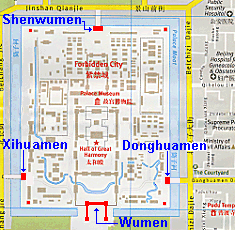Used and Abused


Having the same layout as her sister palace gates east and west, Shenwumen did not stand out as something speciel or unique. It is a five bay (yeng) building with three doorsways and a double eave roof covered with yellow glazed tiles.
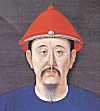
Originally the gate was called Xuanwumen ("Gate of the God of Water") but after restoration under Qing Kangxi emperor (r.1661-1722) he had the name changed to Shenwumen. He felt that the pronunciation of the original name was too close to Kangxi's own name of Xuanhua.
The inside (southern) of the gate was equipped on both sides with horse ramps up to the top of the surrounding wall.

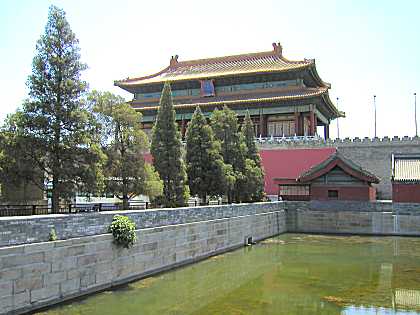
Following the same architectural style as all its Palace City sister gates, the openings of the three doorways were arched on the inside face but rectangular or square on the outside.
The northern part of the Palace City moat in front of Shenwumen (see photos right) was popularly known as "Tongzi River". Facing Shenwumen on the other side of the moat overpass was the inconspicuous Beishangmen, an ordinary 5-bay, single eave roof gate.
On the north side of the moat and on both sides of Beishangmen the moat was lined by fifty small houses, visible at the bottom of the above (old) photo. The ones on the western side (right on the picture) were used as school classrooms for the officials' children. At that time the buildings only allowed for a narrow footpath along the moat and Beishangmen.
The houses were demolished in the 1930's and a wide road constructed alongside the moat instead. The road still exists as Jingshan Front Street. At the same time a wall was erected around Jingshan Park to the north. Beishangmen itself was removed in the 1950's.
Use of Shenwumen was quite extensive, in fact it was the Palace City gate with the highest amount of traffic.
China's emperors lived with their family, eunuchs and palace maids in the Inner Court of the Palace City - the area right behind Shenwumen. The gate was therefore the most common passageway for the empress, the Grand Eunuch, all the imperial guards and the craftsmen, who handled the general upkeep.
Officials, on the other hand, were only allowed to use this gate with special permission and were severly punished if the violated this rule.
In the Qing dynasty (1644-1911) new palace maidens and imperial concubines were welcomed and entered the Palace City through this gate.
Abuse of this gate was alas also seen on many occasions. In fact, too many to be listed here, so let's just pick a few, well-known ones.

Pu Yi's final resting place
A good example ocurred in 1924, when the last emperor, Pu Yi, was forced out of the Palace City at gunpoint with his family. Instead of at least showing him some respect by letting him exit the Palace City through the central passageway of the prestigious Wumen, which had been customary for centuries, he was made to walk out north through Shenwumen.
Following the expulsion of the last emperor, the northern part of the palace city was turned into a museum, just like the southern part a few years earlier. In 1948 the two museums were combined into one called "Forbidden City Museum".

Shenwumen had already witnessed other sad events in China's imperial history. On March 17, 1644, facing superior troops of a peasant rebellion, the Ming Chongzhen emperor (r.1624-1644) ordered his empress and concubines to commit suicide and two days later walked out through Shenwumen, then through Beishangmen and finally into Jingshan Park where he hung himself from a scholar tree. The tree is still there.
Sadly, although the Chongzhen emperor had been a diligent and hard working ruler in running his country he nevertheless had to be the one seeing the demise of not just his ancestor′s, empire but the entire Ming dynasty due to serious misgovernment by too many of his immediate predecessors.
As a result, Shenwumen would never again serve native Han Chinese rulers of China. The subsequent Qing rulers (1644-1911) were Manchurians and after the fall of the Qing the abode of China's rulers never returned to the Palace City till this very day.
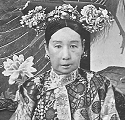
Again in 1900, Shenwumen served as the sad exit point for the imperial powers under threat of outside armed forces. Unable to stop the Eight-nation expedition force dispatched to quell the so-called Boxer rebellion, Empress dowager Cixi (left) hurriedly and with little grace dressed up as simple palace maid left the Palace City through this gate and fled head over heels to Xian.
In the absence of the supreme ruler, the foreign forces entered the Palace City, violated its treasures and buildings and paraded their troops through the entire palace.
How to Find it Today?
Being the only northern entrance, then you must go through this gate either when entering or exiting the Palace City from the north.
The Women behind the Last Emperor
On December 1, 1922 Pu Yi, the last emperor, also married his 2nd consort, Wen Xiu, a native of the Eerdete clan of Manchuria and 3 years younger than him. Below is the picture from which he selected her for his concubine.

She moved into the Palace City, but was expelled along with the emperor already in 1924 and joined him and his wife to their "exile" in Tianjin.
She lost patience with the preoccupied emperor and with the advent of new times in the republic, she took the for an imperial consort unprecedented step to file for and be granted a divorce from Pu Yi already in 1931.
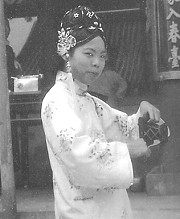
In response and in anger, he immediately demoted her to a common consort, which however was an empty gesture.
Wen Xiu spent the rest of her life as a primary-school teacher till her death of illness in 1950.


